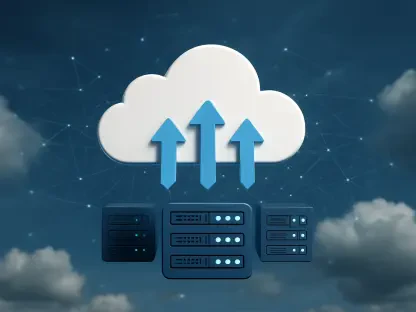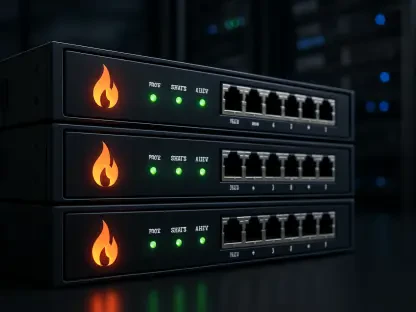Could cloud computing costs be slashed dramatically while maintaining top-tier performance? Google Cloud has stepped into the spotlight with a bold answer, unveiling its Axion N4A instances—a revolutionary Arm-based solution designed to disrupt traditional computing economics. This isn’t just a new product; it’s a challenge to businesses everywhere to rethink how much they’re willing to pay for power in the cloud.
This launch marks a pivotal moment in the industry’s shift toward Arm technology, promising up to twice the price-performance ratio compared to conventional x86-based systems. With operational expenses soaring for enterprises managing diverse workloads, the significance of this development cannot be overstated. Google Cloud is positioning itself as a leader in delivering affordability without compromise, tapping into a broader trend that could reshape budgets and sustainability goals for companies worldwide.
Why Cost Efficiency Is the New Battleground
Cloud computing has become a cornerstone of modern business, yet the financial burden of scaling operations often weighs heavily on decision-makers. Enterprises are caught in a balancing act—needing robust performance for data analytics, web servers, and more, while grappling with escalating costs. Google Cloud’s Axion N4A emerges as a timely response, targeting general-purpose workloads with a promise of significant savings.
The Arm-based architecture behind N4A offers a stark contrast to the energy-hungry x86 systems that have dominated for decades. By focusing on efficiency, this innovation not only cuts expenses but also aligns with growing demands for sustainable tech solutions. It’s a strategic move that could redefine competitive edges in industries reliant on cloud infrastructure.
Arm-Based Computing: The Industry’s New Powerhouse
Beyond Google Cloud’s latest offering, a larger transformation is underway. Arm technology is gaining traction as a viable alternative, with major players like AWS and Microsoft also investing heavily in similar solutions. AWS, for instance, reports that 50% of its new instances run on its Arm-based Graviton chip, underscoring an industry consensus on cost and energy benefits.
Google itself has long trusted Arm for internal operations, powering services like YouTube and Gmail with this technology. This internal adoption reflects a confidence that extends to customers, signaling that Arm isn’t just an experiment—it’s a proven foundation for handling massive, complex workloads. The shift challenges long-standing norms, paving the way for broader acceptance across enterprise environments.
Inside Axion N4Power and Affordability Combined
Diving into the specifics, Axion N4A is tailored for versatility, supporting applications from containerized microservices to small-to-medium databases. With configurations offering up to 64 virtual CPUs, 512GB of DDR5 memory, and 50 Gbps networking, it meets a wide range of enterprise needs. Available in select regions like Iowa, Northern Virginia, Frankfurt, and the Netherlands, it integrates seamlessly with Google Compute Engine and Google Kubernetes Engine (GKE).
What sets N4A apart is its economic edge—Google claims it delivers up to 80% better performance-per-watt than comparable x86 virtual machines. This efficiency translates directly into lower bills for businesses managing low-to-medium traffic servers or back-office systems. Additionally, it complements the more robust C4A instances for high-traffic demands, with bare-metal C4A Metal options slated for future release to tackle specialized tasks.
Expert Voices on Google’s Strategic Leap
Industry analysts are taking note of Google Cloud’s aggressive push into Arm-based solutions. Brandon Hoff, research director at IDC, points out that Google’s in-house design of Axion processors, paired with direct sourcing from manufacturers like TSMC, halves hardware costs—a saving passed on to users. This cost-cutting strategy gives Google a distinct advantage in a crowded market.
The broader trend also gains credibility from competitor moves. Microsoft’s adoption of Arm for Azure and Microsoft 365 services further validates the technology’s potential. Hoff notes that such widespread investment signals a tipping point—Arm is no longer a niche option but a core component of cloud computing’s future, with Google leading the charge in translating these benefits to customer value.
How Enterprises Can Capitalize on This Innovation
For businesses ready to embrace Axion N4A, the path forward involves a clear evaluation of current setups. Start by identifying workloads suited for N4A’s strengths, such as virtual desktops or data pipelines, and leverage Google Cloud’s preview availability in supported regions. Comparing performance metrics and costs against existing x86 systems could reveal substantial savings, especially with Google’s touted doubled price-performance ratio.
Scalability remains a key consideration—N4A can be paired with upcoming C4A options as demands grow. This flexibility ensures that companies aren’t locked into a one-size-fits-all solution but can adapt their cloud strategies over time. Embracing this technology isn’t merely an upgrade; it’s a recalibration of financial planning in the digital age, offering a chance to optimize without sacrificing capability.
Reflecting on a Cost-Conscious Milestone
Looking back, Google Cloud’s rollout of the Axion N4A instances stood as a defining moment in the quest for affordable computing power. It underscored a seismic shift toward Arm-based systems, challenging the status quo with unmatched efficiency and price benefits. Enterprises that adopted early found themselves ahead of the curve, reaping savings while maintaining robust operations.
The journey didn’t stop there—businesses were encouraged to assess their cloud strategies, test N4A’s capabilities, and plan for integration with future offerings like C4A Metal. This wasn’t just about cutting costs; it was about building a foundation for sustainable growth in an increasingly digital world. The question lingered: how far could this technology take the industry in redefining what’s possible?









